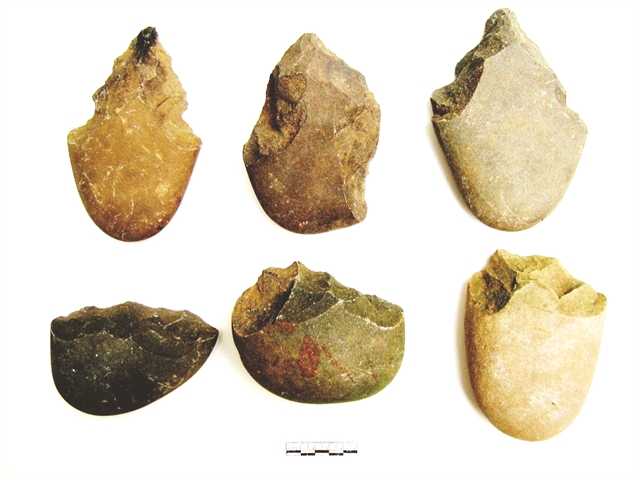 Life & Style
Life & Style


|
| Stone working tools unearthed in Tuyên Quang Province recently. The tools date back some 20,000 years. Photo vass.gov.vn |
TUYÊN QUANG — Archaeologists from the Việt Nam Archaeology Institute and Tuyên Quang Provincial Museum have recently found traces of early humans dating back 20,000 years in the hilly forests of Chiêm Hóa District, the northern province of Tuyên Quang.
Professor Trình Năng Chung, head of the excavation team, told a Vietnam News Agency reporter that the team found the traces of early humans at a series of nearby relics that now are tall hills.
The area used to be an ancient riverbed on the right bank of today’s Gâm’s River in Bình Nhân and Vinh Quang communes of Chiêm Hóa District, he said.
He said that on the hills, locals grow cassava and corn.
“We have unearthed hundreds of stone tools near the surface and at a depth of dozens of centimetres from the surface,” he said.
On the hills in Tân Lập Village, Bình Nhân Commune, the team found stone tools that were cut in the typical form of those belonging to the Sơn Vi Culture, an early people of the Old Stone Age, some 20,000 years ago.
The rough tools with sharp points are thought to have been used for chopping and carving.
Archaeologists also found big stones used cut the tools, meaning they were made right at the site.
At Thượng Temple near Gâm River, within an area of 5,000sq.m, the team found hundreds of stone tools from various prehistoric periods. The earliest were multi-purpose stone tools of primitive people.
“All these tools were made from small stones taken from rivers and streams,” Chung said.
They have also found tools with more advanced carving techniques like short axes, oval-shaped axes and round tools.
“These tools must have been made by people of the New Stone Age, of the Hòa Bình Culture, dating back 8,000-9,000 years,” Chung said.
At the temple site, the team also found bronze axes and bronze arrows like those of the Đông Sơn Civilisation, from 2,000 years ago.
Prof Chung said the materials show that the temple site has been a residential area of various generations from the Old Stone Age to the New Stone Age.
In the Metal Age, the area might have been a crowded area of members of the Đông Sơn civilisation under the Hùng Kings era, he said.
“This is a rare relic of its kind in the northern mountainous region of Việt Nam,” he added.
Also in Bình Nhân Commune, archaeologists found rectangular axes and rough ceramic pieces at Loong Cha Cave.
The team guessed the cave might have been a residential area during the New Stone Age, 4,000 years ago.
Experts will do further research at the cave in the next few months. — VNS




